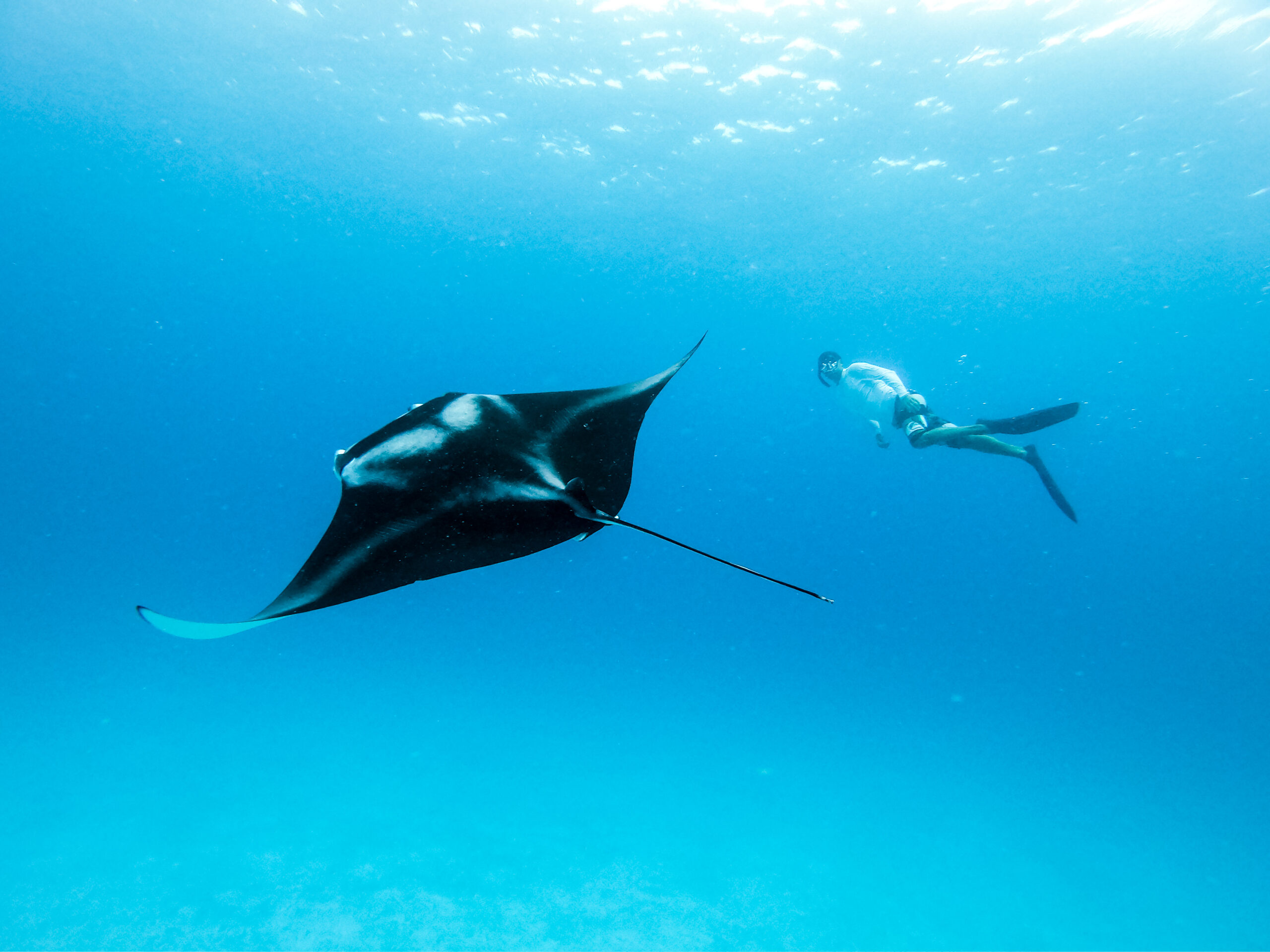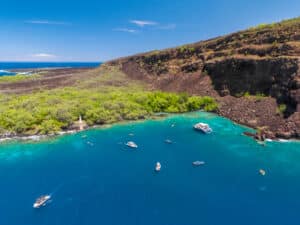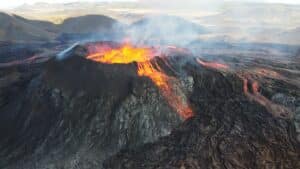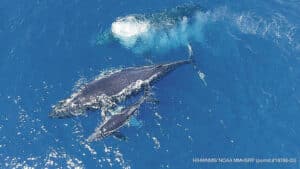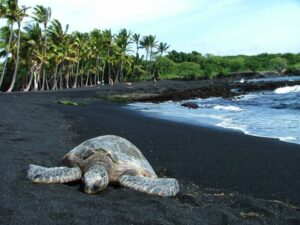This story contains affiliate links.
On Hawaiʻi Island, snorkeling with manta rays at night has become a hugely sought after tourist activity.
In the darkness of the night on Hawaiʻi Island, a rainbow of lights illuminates the waters of the Kona Coast. Beneath the surface, manta rays glide and twirl, nibbling on plankton — their main source of food. The plankton are attracted to light, so tour companies illuminate the water after sunset to increase plankton activity and lure manta rays for snorkelers to observe.
Manta Point at Kaunaʻoa Bay is the most popular spot for swimming with manta rays in Kona, Hawaiʻi. Travelers should consider whether the company leading their manta ray snorkeling tour is using ethical practices. Any activity involving wild animals — or fish — is bound to impact the species in some way, so it’s important to understand the potential consequences.
Companies such as Hawaii Island & Ocean Tours offer seven to eight tours a night. They minimize their impact by bringing smaller groups and encouraging a look-but-don’t-touch approach.
“We offer a smaller group size in contrast to a lot of the other companies that operate,” General Manager Jared Dufault said. “If you look at companies like SeaQuest, they’re operating upward of 30-plus people per trip, where we’re doing it at 17. So it’s a little bit smaller, it’s a little bit more intimate in that regard.”
While simply watching manta rays doesn’t appear to harm them, chasing or touching them can cause stress or even injury. Hawaii Island & Ocean Tours’ booking page states that its mission is “to get you as close to these incredible animals as safely and respectfully as possible.”
Tour guides with Hawaii Island & Ocean Tours take guests on a gentle, five-minute boat ride, using caution to avoid making waves. After anchoring about 100 yards offshore at the manta feeding grounds, they shine 200,000 lumens of light into the water. Guests slide into the water with their snorkeling gear, a paddleboard and a flotation belt. They are instructed to place the flotation belt around their ankles and hang on to the paddleboard to remain flat on the water’s surface. Then, all they have to do is wait for the manta rays to appear and feed on the plankton attracted to the lights.
“Essentially, we put on a buffet of zooplankton for them,” Dufault said. “They’ll get like six inches underneath the paddleboard and just do backflips right in front of your face — like literally right there.”
Book: Manta Ray Moonlight Snorkel
Although intimidating in size — manta rays can reach up to 18 feet wide — they are not dangerous creatures. With no teeth to bite or barbs to sting, the experience is completely safe.
“Every year, tourists spend an estimated $140 million to see manta rays in the wild,” according to conservation group Manta Trust’s website. With this level of activity in the water, Manta Trust offers a 10-step guide on how to behave responsibly while swimming with manta rays anywhere in the world. The tips include entering the water quietly at least 33 feet away from the rays, refraining from splashing and keeping your hands to yourself.
If divers and snorkelers follow Manta Trust’s Code of Conduct, they can experience these majestic creatures in a way that doesn’t disturb or harm them.
